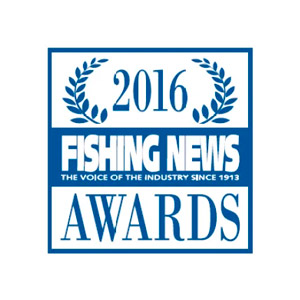Maturation Process of the Filter on your Lobster Tank
 For your shellfish holding system to operate successfully it needs to have a mature filter.
For your shellfish holding system to operate successfully it needs to have a mature filter.
When you buy a new system (or when you start your system up again after it’s been empty for a while) it takes time to mature the filter. There are no shortcuts and you need to have patience. We hope if you follow the advice in this article you can be up and running as quickly as possible.
Many of our customers ask us how long it takes to mature the filter. As this is a biological process which depends on many factors it is impossible to say how long your tank will tank to mature. As a guide most of our clients take 6-8 weeks to get the system fully mature but one customer who followed our advice to the letter did it in just three weeks.
It is important to note that biological filtration relies on live beneficial bacteria colonies. In new systems, these colonies take time to establish and this period of growth is known as the maturation of the filter.
Factors which can affect the speed of the maturation process:
- Temperature – Bacteria grow best at warmer temperatures, but a compromise must be made for best condition of the stock
- Stocking levels – Gradually increasing the stocking levels during the maturation process will support healthy microbial colonies
- Water quality – if you are using natural seawater, this will contain wild bacteria which can help to populate the system; conversely, tap water may contain additional chemicals which can prevent bacterial growth
We supply some mature filter media with our filters to complement the new media, in order to kick-start the maturation process.
When a system is new, filter bacteria need to multiply to consume the ammonia produced by the lobsters. One species of bacteria convert toxic ammonia into less toxic nitrite and then another species convert nitrite into the least toxic nitrate. Please see our article on the Nitrogen Cycle for more information: http://www.toddfish.co.uk/todds-top-tips-for-ammonia/
The system is only completely mature when both ammonia and nitrite levels are zero. This can take several weeks and even longer at low temperatures as filter bacteria are affected by temperature. It is very difficult to predict how long this will take but the ammonia and nitrite levels should be monitored during the start-up and the quantity of lobster in the system kept low until the system is mature. It is important not to operate the system too cold during the start-up phase or to switch off the filtration equipment when there are no lobsters in the system, as the beneficial bacteria in the filter must be kept alive and healthy in order for the system to operate correctly. If the filter bacteria are allowed to die, the maturation process has to start over again.
At 4 °C the filter bacteria activity is zero and at 8°C it is 25% of the optimum ammonia and nitrite consumption. It is essential to operate the system at above 4°C for the filtration system to function. For holding lobster in a recirculation system 8°C is a good compromise between slowing down the metabolism of the lobster and the function of the filtration system.
When we refer to maturation we mean all of the water parameters are at the optimum levels and the system can be stocked to full capacity. Until the system is mature you need to proceed with caution.
Stocking
We would recommend stocking levels of 25% of maximum stocking capacity initially. Once the ammonia test results are 0 then slowly add more stock until you reach full capacity. The biological filter needs the ammonia produced by the stock to develop so don’t be tempted to run the system empty. It is worth noting that the more stressed the animals are (due to rough handling, capture stress, movement etc.) and the longer the lobsters are out of the water then the higher the amount of ammonia they produce. Canadian lobsters produce a much higher level of ammonia due to the length of time they have been out of the water. Ammonia is toxic to shellfish and they will die if the levels are dangerously high.
Water Testing
Test the water in your system regularly (please see ideal water parameters table below). You should test for ammonia, nitrite, nitrate, salinity, temperature and pH. We supply test strips as well as a water testing service and advice to all of our customers.
The optimum water parameters are:
Ideal Water Parameters
| Parameter | Safe Level |
| Ammonia | Ideally 0, but less than 1.0 ppm |
| Nitrite | Ideally 0, but less than 1.0 ppm |
| Nitrate | Less than 50 ppm |
| Salinity | 32-35ppt (unless matching supplier) |
| Temperature | 8°C is optimum compromise between bacteria and livestock |
| pH | 7.6-8.4 |
Interpreting Test Strip Results
Each chemical test has different acceptable parameters. Below is a guide to what the results mean and what action is required:
| Result | Do | Do Not |
| Ammonia is too high
|
Make small and regular water changes or add Aquapure | Add new stock until ammonia level is reduced |
| pH too low
|
Add sodium bicarbonate to buffer pH to nearer 8-8.2 | |
| Nitrite too high
|
Wait until filter is more mature
|
Add new stock until Nitrite level is lowered |
| Nitrate too high | Do regular water changes or complete water change to reduce Nitrate load | Add new stock until Nitrate level is lowered |
| Salinity too high | Add dechlorinated freshwater
|
|
| Salinity too low | Add sea salt or do regular water changes
|
Once the system is mature then regularly check the water, about once a week. If there are any changes please refer to the table above for the action to take or call us for advice.
Some of our clients use products such as aquapure which is added to the system which bonds with ammonia and can give temporary relief. This is only a temporary fix however as the ammonia will leach back into the water within days. We think this should only be used in exceptional cases i.e. you cannot get access to fresh seawater to do a water change.
This is a short guide to maturing your filter but remember:
- Slowly increase stocking levels.
- Test your water
- Take appropriate action based on your water test
- And finally – be patient.
For any more information or advice please call Keith or Laura on tel 01383 820685.
Best Fishes,
Errin Todd
Sea-E-O
 For your shellfish holding system to operate successfully it needs to have a mature filter.
For your shellfish holding system to operate successfully it needs to have a mature filter.



